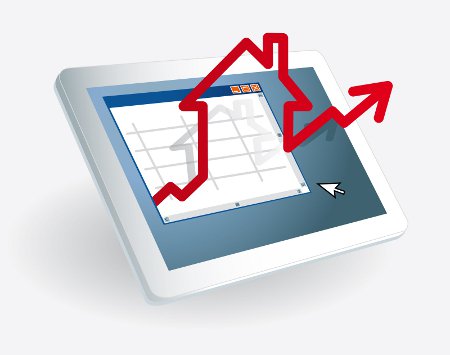You are viewing our site as a Broker, Switch Your View:
Agent | Broker Reset Filters to Default Back to ListTrend Spotting: How to Recognize Trends and Act
November 13 2013
 Do you ever feel behind the eight ball when it comes to figuring out changes in the market? For example, you hear of a sales associate who is killing it in the REO market when you just realized that it was a niche you should pursue? Most of the time, if you're reading about trends in the newspaper, you've already missed your chance to be an early adopter. But, if you know what to look for in the market, you will see the signs for an emerging trend.
Do you ever feel behind the eight ball when it comes to figuring out changes in the market? For example, you hear of a sales associate who is killing it in the REO market when you just realized that it was a niche you should pursue? Most of the time, if you're reading about trends in the newspaper, you've already missed your chance to be an early adopter. But, if you know what to look for in the market, you will see the signs for an emerging trend.
Leo Pareja, a team leader with Keller Williams Realty in Reston, Va., is a master of knowing what to look for when spotting new trends in the market.
Pareja got wind of the market shift a couple of years ago before it even occurred and pared down his team from 18 people to 10 people in anticipation of the slow market. He started personally investing in several rental properties well before prices started heading upwards. "I bought as many as I could. The last four years were your best buying opportunity in years," he says.
In the past several years, Pareja has focused on REO and short sale properties, but now shifting his business to the future—traditional sales. How is he able to spot trends and act? Here are his secrets:
1. Watch business trends. "I read a ton—macro and micro economics, indicators, trends. I also mastermind with business owners outside of my industry," says Pareja. In fact, he noticed a trend with some business owners that it was getting hard to find good talent. "That's a good indicator that real estate will get better in the next few years." Pareja reads the Washington Business Journal, and The Wall Street Journal, and he uses the Flipboard newsreader app, which allows him to pick different feeds of news to read. "I get a lot of trends through social media. I read the posts by other professionals."
2. Network. "Make sure you're networking with top agents from around the country," he says. "I have the phone numbers of many of the top 100 REAL Trends/The Wall Street Journal The Thousand, and I reach out to them." When he sees a real estate professional doing something well, he will fly out to shadow that person. "It allows me to see if it will translate in my market. It may cost you $10,000 to find out if it works, but you have to see through the process."
In addition, Pareja encourages real estate professionals to come to him. And, he schedules at least two phone calls with these agents each month to see what they're doing.
3. Find a mirror market. In 2010, Pareja saw the markets bottoming out across the country. So, he decided to focus on following national and local trends. "I consider the West Coast our mirror market. They are about six to 12 months ahead of us," he says. That's why, when he saw the REO market boom in California, he shifted his focus away from traditional sales. "I saw absorption was driven by investors and that was driving the recovery."
When he saw the REO market slow down in California, Pareja knew it was time for him to shift his business. "We always did retail/traditional sales, but our focus was on REO and short sale. It was 40 percent of our business. Now, we're slowly coming back to retail and getting our customers to recognize that fact."
4. Get back to basics. You hear it ad nauseam, but it's the truth. Go back to basics. "Reach out to everyone in your database and let them know what you're doing," he says. "You'll be surprised at the number of people in your database who don't even realize you still sell real estate."
5. Get involved. "I stay active in trade organizations such as the National Association of Hispanic Real Estate Professionals and the National Association of Realtors®. I talk to people about what's going on in their markets and attend conferences," he says. Doing so exposes him to a cross section of other real estate professionals who share information about new trends and technologies.
The truth, says Pareja, is there's no secret to trend spotting. You just have to put the work in and pay attention. "Most of the big trends are clear to spot if you really pay attention," he says.
This article originally appeared on the REAL Trends Blog. Reprinted with permission of REAL Trends Inc. Copyright © 2013









